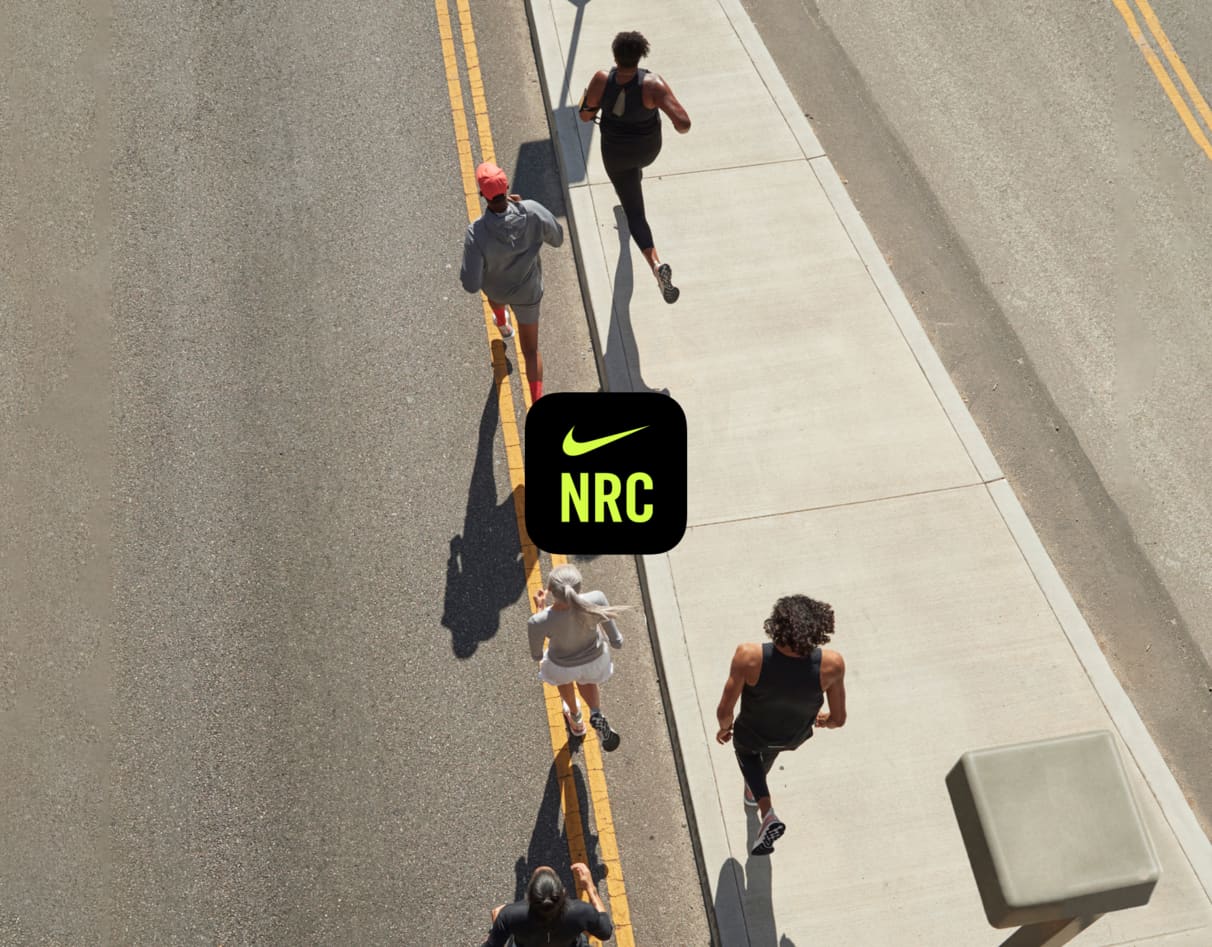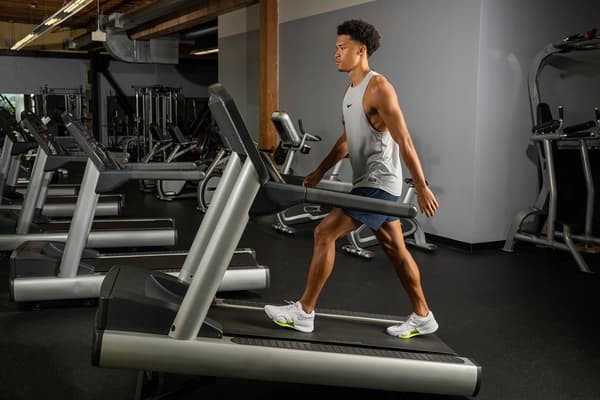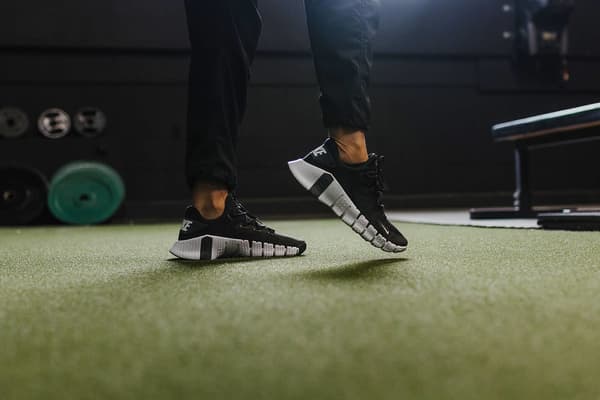How to Master Proper Running Form, According to Experts
Sport & Activity
Running coaches break down what proper running form looks like for both sprinters and long-distance runners.

One of the most enticing things about running is how seemingly easy it is to do. The preparation is quite manageable: put on your favourite workout gear, throw on a good playlist, grab your favourite running shoes and you're ready to go. But as accessible as running is for many people, technique and proper running form can each take a while to master.
There are a lot of reasons why it's wise to focus on having proper running form—for instance, to be more efficient and improve your performance. But arguably the most important reason to focus on proper running form is that "good form is important because it allows you to stay injury free", said Jesse Chapman, assistant athletics coach at San Diego State University, US Track & Field and Cross Country Coaches Association-certified strength and conditioning, jumps and multi-events specialist.
RELATED: How to Increase Your Running Mileage Without Getting Injured, According to Experts
If Chapman were to summarise what "bad" or inefficient form looks like, it'd be "a lack of rigidity through the trunk, a lot of unnecessary twisting while running and footstrikes being way too far in front of the body's centre of mass", he said.
It's normal to see different running forms because everyone has a different anatomical make-up, but there are a few key principles to achieving proper running form—whether you're someone who loves to sprint or someone who prefers to run for longer distances.
What is the proper running form for sprinters?
To better understand what good running form looks like for sprinters, Chapman breaks down what the mechanics should look like from head to toe.
"With the trunk, I think that you need to see some stability and some integrity. I think that you'll see a lot of lateral movement, moving side to side with the upper body, which for me as a coach tells me that A, we either have some instability through the obliques, which are the side abdominals, or you have some instability through the hips", Chapman said.
If you're a sprinter, you may have heard that your arms should be at 90-degree angles as you run. While this is true, it's a snapshot of your form, Chapman said. "When you're looking at your arms, the arms are supposed to mimic the legs. Your legs are at 90 degrees at one moment in the stride, so therefore the arms should be at 90 degrees at one moment in the stride", he said.
RELATED: How to Get Faster at Sprinting, According to Experts
There will also be points where your legs are more acute than 90 degrees and times when they're more obtuse—the same goes for your arm positioning. The big piece is making sure your arms and legs are moving together, especially when it comes to things like working on speed, power and plyometrics. If your arms aren't working with your legs, you may experience a false sense of power and get stuck on the ground and be less efficient, Chapman said.
You also want to make sure your arms aren't crossing over your midline to reinforce efficient, forward movement. Long story short, since the goal is to move forwards quickly, your arms should also be moving in that direction.
In regard to the lower body, Chapman explained that the form is highly debated when it comes to the footstrike of distance athletes versus sprinters (more on that soon). If you're sprinting, your foot should be dorsiflexed (think about pulling your toes up to the top of your shoe) and you should be running on the balls of your feet/footpad. This is because if you heelstrike, the foot will land in front of the hips, and that initial force will act as a braking force, causing you to slow down.
"Whereas if we're striking on the ball of the foot, each strike is helping us. There is no slowdown when we hit the ground. Just from an efficiency standpoint, it allows us to continue to move forwards. All the energy that we're using is far more useful, but we have to utilise a lot more muscle than you see when you're sprinting", Chapman said.
If you heelstrike, especially if you run long distances, you're driving the femur (thigh bone) back into the hip, which can result in tight hips and IT band issues. Both of these complications can then lead to knee discomfort, runner's knee and posterior tibial issues, Chapman said.
What is the proper running form for distance runners?
On the topic of proper running form, Jes Woods, Nike Running coach, ultramarathoner, ultra and trail head coach for Brooklyn Track Club, said that "you do hit a point where your form is your form and your stride is your stride, but there are some general rules of thumb [in regard to proper running form for distance runners]".
To help people improve their running mechanics, Woods likes to do a head-to-toe check.
"The first thing that I talk about is running tall, and I'm a visual person, so I tell people, 'Imagine you have a string pulling you up from the top of your head and it's just pulling you taller and taller, and then that string is cut and you're still standing tall'".
You don't want your shoulders scrunched up near the ears, so she instructs people to relax and drop their shoulders down (the easiest way to do this is by taking a deep breath and then exhaling). But your shoulders shouldn't be dropped to the point where your back arches. Instead, you want them relaxed enough to keep your spine in a neutral position, which will allow you to lean forwards and engage your glutes properly, Woods said.
RELATED: What Is Breath Work—And Can It Help Your Sport Performance?
The slight lean forwards should come from your feet—this is not a hip hinge—and should look like you're going to fall forwards. This lean will also put you on your midfoot when running. Woods said she tells people to place less emphasis on which part of the foot strikes the ground and instead, "what I like to focus on is your foot landing directly underneath you, directly under your hips?"
You should also relax your hands. "I want your hands to be relaxed, but they're not lazy and flailing around like a T-rex", she said. It's OK to have some cross-body motion with your arms, but they shouldn't cross your midsection.
You may have seen people who take big, bound-like strides when they run or those who have a prancing style of running—neither are considered to be good running form, as they will lower your cadence and can lead to injury over time.
To work on your form, Woods said she recommends focusing on your cadence, which can influence your stride mechanics. If you have access to a treadmill, take advantage of it. Treadmills can act as a controlled variable as your body learns what certain cadences feel like. Woods also suggested finding a playlist of songs that are 180 beats per minute and setting the speed of the treadmill to a casual running pace to help you find that cadence.
In addition to focusing on your cadence, Woods also said to pay attention to your ground contact time.
"If you're taking these long strides or these bouncy strides, you're getting a lot of airtime underneath you. That means you're spending more contact time on the ground before you push off to your next stride", she said.
Focusing on this will also help prevent injuries such as shin splints, she said. To improve your ground contact time, simply envision the ground is made of hot lava—you probably wouldn't want to spend much time on it if it was (note, this also applies to sprinters!).
How to Improve Your Running Form
In addition to focusing on core stability, hip stability and getting reps in to improve your running form, it's important that you start adding restorative recovery work into your routine if you haven't already. Things such as yoga, massage therapy, physiotherapy, band activation, mobility work and acupuncture will all help improve your form. They ensure that your muscles are working properly and prevent the body from shutting down different muscles due to a lack of use or because you've created movement patterns that shut certain muscles down, Chapman said.
Another way to improve your running form? Sprint more. Chapman recommended more sprinting because there's more diversity in the movements compared with when you're running for longer distances.
"Sprinting can reinforce the actual movement pattern that we're trying to mimic when we're running. We should think of going for a long run like we're sprinting just with a smaller amplitude of movement, so it's a little more contained", he said.
RELATED: What Are the Benefits of Interval Training?
If you're someone who likes to run around three times a week, Chapman said to add 10 x 50-metre sprints to your training routine one to two times a week between your long-run days. If you run more—for example, six or seven days a week—Chapman recommended doing five to six hard 100-metre sprints at the end of your running workouts on your lighter running days.
Doing sprint workouts twice a week at a minimum "can be extremely helpful because it is a very specific movement", and breaking up repetitive runs with more diverse movements will help you stay healthy and improve your mechanics over time, Chapman said.
Additionally, adding strength training into your workout routine can make a huge difference when it comes to improving your form.
"Lifting weights is going to help your connective tissue be a little more durable and just help you be a little more durable as an athlete", Chapman said. "With weight training, you create so many diverse movements in a gym that it's just going to help you become a little bit more athletic. And the more athletic that you can become, the more resilient you are to injury".
If this sounds like a lot, you aren't wrong, but just like anything, improving your form comes down to being intentional, creating good habits, and having consistency and patience. And if you put in the work, you should begin seeing improvements in your running form within two to three weeks, Chapman said.
Words by Tamara Pridgett





